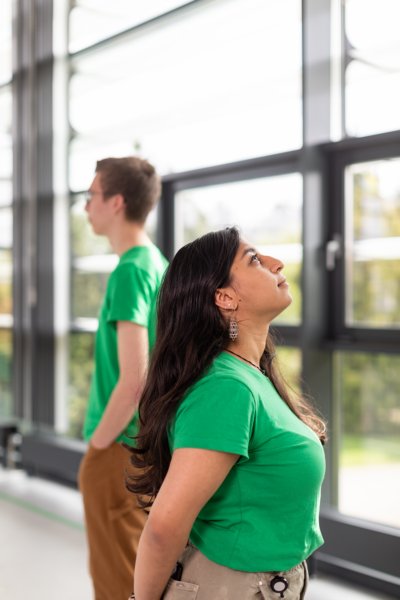What is the value of a social living environment? And how do we design it? Thinkers, doers, and imaginers have been asked to make digital contributions. DesignLab’s director, Sabine Wildevuur, wrote a chapter about designing the meeting place of the future. Her contribution is part of the digital bundle, published by chief government architect Floris Alkemade, the Dutch Council of Public Health & Society.
When people come together, it is more than just two or more people meeting: worlds come together. The meeting place is a gathering place for diverse ideas, concepts, expectations, needs and wishes. Sometimes these are polar opposites and sometimes dialogue makes us realise that we are not as far removed from one another as we initially thought. The meeting place of the future connects these worlds, both physically and digitally. Yet, how can we design these meaningful meeting places? How can we connect worlds and people? Sabine Wildevuur describes if and how technology can add value.
Departing from the point of shared dreams
More than ever, the meeting place of the future is a joint concept. But how can communality have a place in the thought process about the future we want to live in, and how do we design applications that further this common ground? In my opinion, the answer lies hidden in the approach we are designing at DesignLab. DesignLab scientist Cristina Zaga and the team are working on a Responsible Futuring approach that forms the foundation of the way we work with stakeholders to concretise shared dreams and wishes.
This is an approach based on a responsible, ethical, social, and sustainable design process, far exceeding a mere say in the design of applications that should have a lasting impact on life. Citizens are also involved in the scientific process, through an approach known as citizen science.
Better understanding as a starting position
The intention is great: fast results from applications or facilities that are churned out at lightning speed. Let’s not waste any time on incessant discussions, but take strides so we can celebrate nice milestones and visible progress. At the same time, thorough analysis of the challenge is the most underrated element in modern design processes. It is an important reason why we arrive at the applications that eventually turn out to be ‘ineffective’.
Arriving at a shared understanding of the issue or the challenge is a first step in creating connectedness. The stakeholders thus have a better mutual understanding, allowing them to realise how best to collaborate in order to arrive at joint, sustainable applications. Figuring out what is going on and what is needed requires more in-depth reflection from all parties than what we are often allocating. This calls for a different way of thinking.
 Working together on more sustainable solutions
Working together on more sustainable solutions
Gathering different stakeholders with diverse ideas, opinions, experiences, and knowledge is a complex exercise that requires a transdisciplinary way of working. This goes beyond simply piling up knowledge from various disciplines. It is also, and specifically, about a connection with society. It is important that the group’s dynamic empowers the individual skills and knowledge and that intrinsic curiosity and experience come to life in the best way possible. Solutions become tangible through togetherness, by looking at them through different glasses.
What is desirable from a technological standpoint?
The increasing digitisation of our society means that the quality of the design process has undeniably gained even more importance. Digital technologies increasingly invade our physical world. They have anticipated and also mainly unexpected effects on how we relate to one another. Algorithms and data can take on a driving role and erode values such as equality, freedom, and accessibility if we are insufficiently aware from an early stage. Transparency in the function of technology is a prerequisite, but the right dialogue about what is desirable or not is just as important. It allows us to steer responsibly designed applications towards a world in which we want to live.





